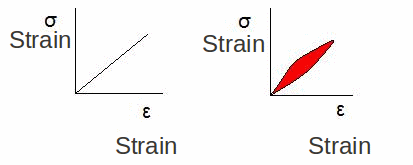Energy is often lost when things move as friction is usually present and energy must be used to over come it. This usually means that the speed of a body at the end of a period of motion is less than it would have been, or that energy has to be given to a body to enable it to overcome friction,. Or that the potential energy of a body at the end of a period of motion is less than it would otherwise have been. The general equation to describe the loss of energy as work is done to overcome friction is:
Initial Energy=Final Energy+Work Done to Overcome Friction
or
Initial Energy=Final Energy+Force*Distance Moved in the Direction of the Force
Initial and Final Energy may be any of:
Kinetic Energy![]()
Gravitational Potential Energy![]()
Elastic potential energy, also known as the energy stored in an elastic string or spring, which is equal to![]() for a spring where
for a spring where![]() and is equal to
and is equal to![]() for an elastic string, where
for an elastic string, where![]()
As energy is changed from one form to another, some is always lost to overcome friction, and though often it is a good approximation to ignore it, it is always exactly that: an approximation.
Even a spring or string loses energy when it is compressed and stretched. This is illustrated on the hysteresis loop below.

The diagram on the loses no energy in being stretched. The diagram on the right illustrated the work done per unit volume, shown by the red area. This is work done to overcome internal forces and cannot be recovered.
